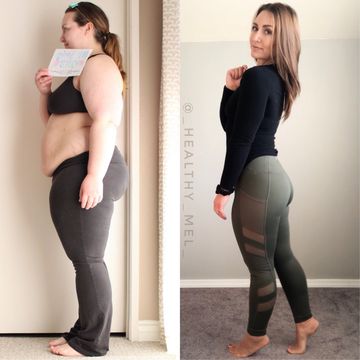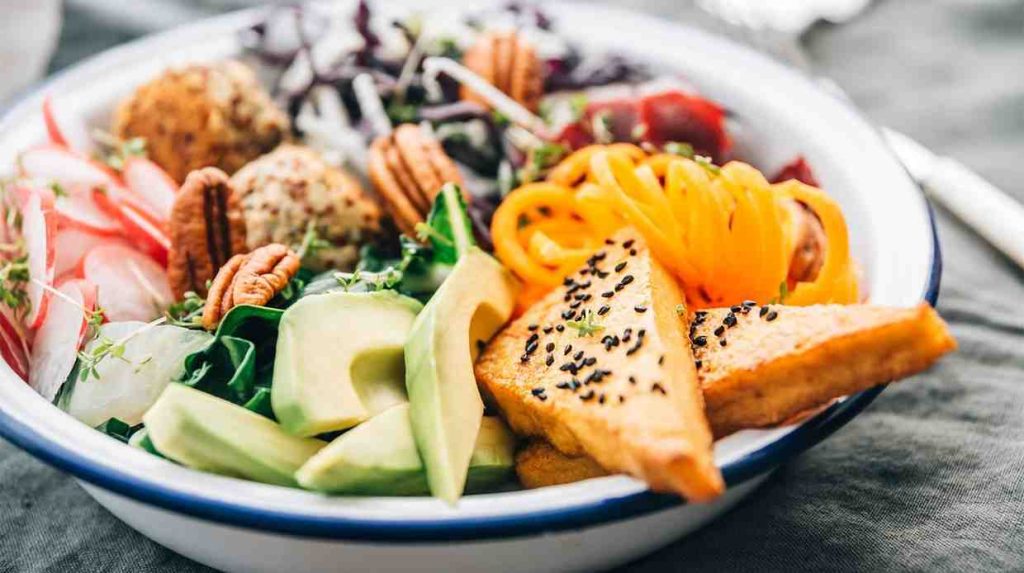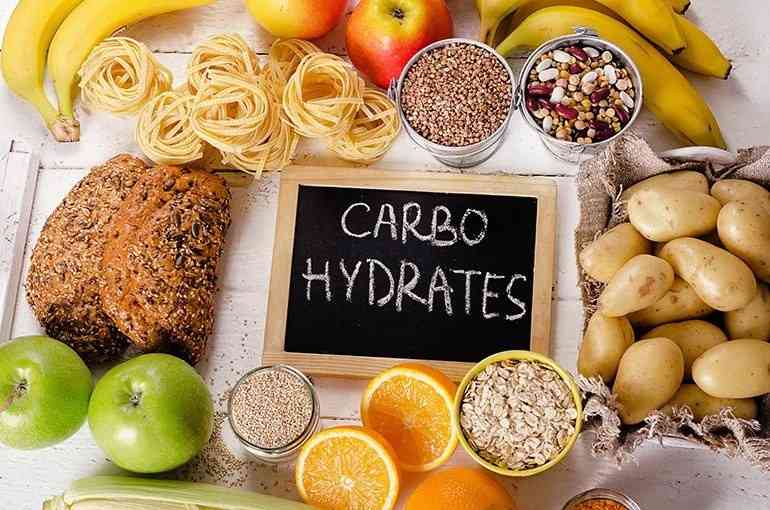There are no shortcuts for building muscle, but that doesn’t mean you can’t learn how to build muscle fast — you’ll just need to implement a few key strategies and stay very consistent with your routine. And no, before you ask, building muscle for women doesn’t mean automatically mean you’ll get “bulky.” (Reminder: there’s also nothing wrong with that.) You can build lean muscle, add muscle tone and strength, and look more defined with strategic training and nutrition.
A lot of women refrain from weight training fearing they’d bulk up so they invest too much time into cardio training hoping they will lose weight quickly and tone up their bodies. This is a common misconception – the opposite is true: proper strength training is what will give a female body the aesthetics they desire.
Those women who have realized this are a true inspiration to watch as they crush it in the gym lifting heavy weights, but still, a large number of ladies are confused about how to train and build lean muscle. With correct nutrition and strategic training, you can add definition and muscle tone.

Reasons to Build Muscle as a Woman
1. Increased Confidence

One of the crucial benefits of building muscles and toning up is the fact that it will boost your confidence. Building muscles helps you lose weight by increasing your metabolism rate. Weight loss results in you looking and feeling better. With a higher level of confidence, you will be able to stand tall and walk confidently. Higher confidence also brings about a larger and more exciting social life.
2. Attention

When was the last time you caught a girl glancing away at another guy’s body? This is what comes to our minds really often when we think of the results of a toned and ripped body. Building muscles will help you attract lots of attention from members of both sexes.
3. Lose fat and weight

Building muscles increases your body’s metabolic rates for 24hrs and that’s right, your muscles that you have built work for you around the clock to burn calories. According to Adam Zickerman, author of Power of 10: The Once-a-Week Slow Motion Fitness Revolution, ” three extra pounds of muscle “burns as many calories as running 25 miles a week, or doing 25 aerobic workouts a month without leaving your couch.”. Simply put, your metabolism will work more efficiently even while you are resting.
4. Look Good with The Body Everyone wanted

A well-toned body built with muscles is every man and woman’s dream. The body you built results in the gain in confidence and attention. Every man looks at you differently while girls are unable to resist a stare or a peek. This body allows you to look good even in the simplest clothes and your muscles that show through every natural movement you make attracts glances from everyone around. For example, Talking on your handphone actually flexes your Biceps.
5. Increased stamina and energy.

Muscle Building results in more power and energy and that in turn, increases your stamina as well. Increased stamina results in better performance in school, work, and also in different sports. Today, many people do not have enough energy and stamina while working and it results in frustration and stress. Muscles can give you an energy boost that will last you through your day at the office or school.
6. Better Posture and lesser chance of back injury

Many experts recommend strengthening core muscles to assist in better posture and endurance of your back. Research has shown that while building your core muscle, you will also tone your lower back muscles and your thigh muscles. This will highly reduce your risk of any serious lower back injuries. To build and maintain muscle, it is advisable to combine weight lifting with a healthy diet. Build your Muscles for all the great benefits now!
Benefits of strength training and building lean muscle
Strength training and building lean muscle offer numerous benefits for both physical and mental well-being. Here are some of the key advantages:

Increased Strength and Power:
Strength training helps improve muscle strength and power, making everyday tasks easier to perform. It enhances overall physical performance and can be beneficial for athletes in various sports.
Improved Body Composition:
Building lean muscle mass helps to reduce body fat percentage and improve body composition. Muscle tissue is metabolically active, meaning it burns more calories at rest compared to fat tissue. This can aid in weight management and help achieve a leaner, more toned physique.
Enhanced Bone Health:
Strength training stimulates bone formation and increases bone mineral density, reducing the risk of osteoporosis and fractures, especially in older adults.
Boosted Metabolism:
Building muscle increases your metabolic rate, which means you burn more calories throughout the day, even at rest. This can aid in weight loss or weight maintenance efforts.
Increased Functional Fitness:
Strength training improves functional fitness by enhancing balance, coordination, and flexibility. It can help prevent falls and injuries, particularly in older individuals.
Enhanced Mental Well-being:
Engaging in regular strength training releases endorphins, known as “feel-good” hormones, which can improve mood and reduce symptoms of anxiety and depression. It also boosts self-confidence and self-esteem.
Better Cardiovascular Health:
Incorporating strength training into your exercise routine can contribute to better cardiovascular health. It helps reduce blood pressure, improve blood flow, and enhance heart function.
Improved Insulin Sensitivity:
Strength training has been shown to increase insulin sensitivity, helping to regulate blood sugar levels and reduce the risk of developing type 2 diabetes.
Increased Joint Stability:
Strengthening the muscles around joints, such as the knees and shoulders, can enhance joint stability and reduce the risk of injuries and chronic pain.
Long-term Health Benefits:
Regular strength training has long-term health benefits, such as reduced risk of chronic conditions like heart disease, stroke, and certain types of cancer.
Remember to consult with a qualified fitness professional or healthcare provider before starting any strength training program to ensure proper technique and safety.
How to Train to Gain Muscle
Although getting muscle gains is equal parts diet and exercise, how you train makes a big difference.
Do full-body strength workouts three times a week. White recommends three full-body strength workouts per week. Within each workout, aim to do eight- to 12-rep rounds of each exercise, “which promotes muscle hypertrophy (maximal muscle growth).”

Pick a weight that feels doable, but challenging. Experiment with lifting dumbbells and kettlebells. Try choosing a weight light enough that you can complete the eight- to 12-rep sets, but that still feels like a challenge. If it feels too easy, go heavier; if it feels too hard to complete only a few reps, go lighter.
Muscle-building exercises to add to your workouts include:
Plank rows
Kettlebell squats
Kettlebell swings
Dumbbell deadlifts
Single-leg extensions on the weight machine
If you’re looking to get started, check out this beginner’s four-week strength-training program.
What to Eat to Gain Muscle
If you have been thin and lanky all your life, you need not worry, there are several ways for you to get that curvy body that you’ve always wanted. Keep in mind that no amount of heavy physical fitness exercise can get you that shapely physique if you don’t back it up with good nutrition. Here are a few tips that you can follow so that you will be on your way to a better-shaped you.
Eat as often as you can.
Before we go ahead and enumerate the many good things that you will have to eat in order to gain muscles, it is important that you understand that eating a lot for weight gain means doing so as often as you can, preferably every 2 to 3 hours interval.

Knowing what to eat to gain muscle is not enough, you also have to increase the frequency of eating them in order to increase your metabolism and keep it that way. Eating three big meals as opposed to eating six smaller but protein-rich meals is not recommended as this habit can lead to fat deposition in your body as well as unwanted loss of musculature.
Focus on lean protein
Protein is the main ingredient for building muscles so focus your food intake on dietary sources that provide plenty of this. Consume as much as one gram of protein per pound of your body weight every day, from food sources like lean meat, poultry, eggs, fish, and nuts. If, however, you are on a diet and your carbohydrate consumption is very low, then you will need to increase your lean protein intake considerably.

Don’t be afraid of the carbohydrates
Learning the distinction between what to eat to gain muscle and what to eat to gain fat is important as this could spell the difference between sexy and flabby. Carbohydrates are good for your body, they increase your energy level and provide fiber. Therefore, adding adequate amounts of rice, pasta, potatoes, and bread to your diet should be done.

Don’t forget your fruits and vegetables
Fruits and vegetables are packed with minerals and nutrients that help lean protein build your muscles and they don’t contain harmful ingredients like artificial sugars and saturated fats so add a bunch of these to your diet as much as you can. Not only are fruits and vegetables good for building muscles, they also slow down food absorption which means less fat storage on your body and more lean muscles. As much as possible, take in organic food as they are healthier and more beneficial for your body.

Step 5: Stay away from artificial sweeteners, too much sodium, and too much-saturated fats.
There are several reasons why you should not be eating anything with artificial ingredients as well as those that contain a lot of sodium and saturated fats but the most important is that these harmful types of food cause many problems to the heart, liver, kidney,s and other vital organs. Remember, knowing what to eat to gain muscle is just winning half the battle so clean up your kitchen and remove anything edible with these harmful substances. Pretty soon, you will be on your way to building your muscles and to a much healthier way of life.

Consistency
Consistency is the key to success. Your body will take time to adjust, grow and change, typically with the first results visible after 2 to 4 months. Speaking of frequency, research shows that it’s best to work out major muscle groups at least twice a week to maximize muscle growth. Also, there should be a day’s rest between work days. Aim to develop a regimen where you put enough stress on your muscles so they begin to change but you also allow sufficient rest time so they can build back up. Then, do your best to stick to it!
When you have the proper knowledge of exercise, diet, adequate rest, and consistency, you can become more confident in your efforts to build muscle. Knowledge will help you push away the fear of becoming “too big” when lifting heavy, which in reality, rarely happens to women as a side effect of muscle gain. By focusing on the right steps listed here, you can build lean muscles and a strong and healthy body.
Increase your training volume
Training volume refers to the total amount of exercise done within a given time period. The most common measurement of this is by looking at the total number of reps, sets, and load you do in a workout (sets x reps x load).
A 2015 study in the Journal of Strength and Conditioning found that there is a clear dose-to-response relationship between volume and muscle growth. The higher the training volume, the more muscle you grow.

What to consider:
- Increase your training volume gradually
- Follow a well-designed workout plan
- Increase the training frequency of specific muscle groups (for example, training lower body twice a week)
A review conducted by Schoenfeld et al. 2017b found that completing 5-9 sets per week showed the most muscle growth. If you are a beginner or just starting out, we recommend starting with 8-12 reps of 4-6 sets per week when training the larger muscle groups (Back, Chest, Legs), as you begin to adapt, slowly increase this to 6-10 sets per muscle group per week.
Include more Compound Exercises
Compound exercises involve multiple joints and muscle groups. For example back rows, squats, deadlifts, shoulder presses, pull-ups and push-ups, etc. These movements require a lot more energy and produce a higher anabolic response than isolated movements.
This response triggers a greater release of hormones like testosterone and human growth hormone which has a positive impact on muscle repair, growth, and recovery. In addition, compound exercises work your stabilizing muscles, help make your joints stronger and reduce your overall risk of injury.
Focus on Progressive Overload
Our muscles are very good at adapting to repeated stimuli and so it is essential to challenge them in order for them to grow. We achieve this through progressive overload.
There are several ways to progressively overload your training and prompt new stimuli:
- Increase training volume
- Reduce rest periods
- Increase time under tension
- Increase resistance/weights
Whichever method you choose, it is important to track your progress, adjust gradually and make note of what works for you vs what doesn’t.
Drink Enough Water
Bet you didn’t expect to see this one on the list. But the truth is water does the complete opposite of bloating you. You’re going to be working your body and sweating to see those gains, but that loss of water in your muscles will slow down their growth and recovery. So staying properly hydrated will keep your body functioning properly and ensure that the effort you put in is getting noticed.

Building Muscle With Sleep and Rest Days
Although working out is important, you should be mindful of taking rest days, especially as you’re just starting out. If you are strength training three days a week, spread out those days to every other day and throw in some cardio days or active recovery days in between. Rest days give your muscles time to rebuild and repair.
Also, sleep is crucial. Make sure you are logging an average of seven hours a night; this also gives your body time to repair and recover. And if you’re well-rested, you’re more likely to head to the gym with energy and crush your workouts.

There are several reasons why you should not be eating anything with artificial ingredients as well as those that contain a lot of sodium and saturated fats but the most important is that these harmful types of food cause many problems to the heart, liver, kidneys, and other vital organs.
Remember, knowing what to eat to gain muscle is just winning half the battle so clean up your kitchen and remove anything edible with these harmful substances. Pretty soon, you will be on your way to building your muscles and to a much healthier way of life.
Lean muscle workout routine
A lean muscle workout routine typically focuses on a combination of resistance training and cardiovascular exercise to promote muscle growth while minimizing excess body fat. Here’s an example of a five-day workout split that you can follow:
Day 1: Upper Body (Push)
- Bench Press: 3 sets of 8-10 reps
- Shoulder Press: 3 sets of 8-10 reps
- Incline Dumbbell Press: 3 sets of 8-10 reps
- Tricep Dips: 3 sets of 8-10 reps
- Push-ups: 3 sets of 10-12 reps
- Abdominal Plank: 3 sets of 30-60 seconds
Day 2: Lower Body
- Squats: 3 sets of 8-10 reps
- Deadlifts: 3 sets of 8-10 reps
- Lunges: 3 sets of 10-12 reps per leg
- Leg Press: 3 sets of 10-12 reps
- Calf Raises: 3 sets of 12-15 reps
- Hanging Leg Raises: 3 sets of 10-12 reps
Day 3: Rest or Cardio (optional)
Day 4: Upper Body (Pull)
- Pull-ups: 3 sets of 8-10 reps
- Bent-over Rows: 3 sets of 8-10 reps
- Lat Pulldowns: 3 sets of 8-10 reps
- Bicep Curls: 3 sets of 8-10 reps
- Hammer Curls: 3 sets of 8-10 reps
- Russian Twists: 3 sets of 12-15 reps per side
Day 5: Lower Body
- Romanian Deadlifts: 3 sets of 8-10 reps
- Leg Press: 3 sets of 8-10 reps
- Step-ups: 3 sets of 10-12 reps per leg
- Glute Bridges: 3 sets of 10-12 reps
- Seated Calf Raises: 3 sets of 12-15 reps
- Plank: 3 sets of 30-60 seconds
Note: Warm up before each workout with 5-10 minutes of light cardio and dynamic stretching. Rest for about 60-90 seconds between sets and increase the weight gradually as you become stronger. Additionally, remember to maintain proper form throughout the exercises and listen to your body. If you’re new to exercise or have any health concerns, it’s advisable to consult with a fitness professional before starting a new workout routine.
Conclusion
Most people today understand the value of staying fit and limiting excess body fat, but the advantages of building lean muscle mass are highly underrated, especially for women.
And aside from looking great and making you healthier and more resilient, another benefit of gaining muscle is that seeing all your hard work at the gym pay off simply feels fantastic.
If you’re brand new to the world of fitness, building lean muscle is an excellent place to start.
And if you’re already in the habit of eating right and exercising, you can easily add muscle by pairing adequate calories and protein with a couple of resistance training sessions per week.

